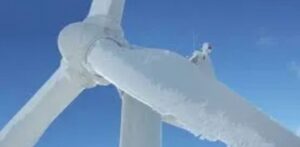As I repeatedly remind people, you don’t build an electric power grid to handle routine weather conditions, you build them to survive rare but extreme weather events. Texas, which became enamored with wind power — wind accounted for between 22% of the state’s electricity in the first half of 2019 — has learned this lesson the hard way. In the midst of a bitter cold snap expected to last several days, ice storms knocked out nearly half the state’s wind-power generating supply. The spot price of electricity has surged to $9,000 per megawatt hour, compared to $100 per megawatt hour during periods of high summer demand. The Electric Reliability Council of Texas called on consumers and businesses to reduce electricity use as much as possible Feb. 14, through Feb. 16. Just imagine how bad the situation would be if Texas derived 100% of its electricity from renewable energy.
Meanwhile, the question Virginians need to be asking in anticipation of the commonwealth deriving much of its electricity from offshore wind power within a few years is this: What’s the freezing temperature for salt water?
Answer: 28.4° Fahrenheit.
Renewable-energy advocates say that one day Virginia’s electric grid can bank plenty of energy reserves in electric batteries. The second question Virginians should ask is this: What’s the freezing temperature for electric batteries?
According to UFO Battery, lithium-ion batteries can be discharged over a range of temperatures from -20°C to 60°C. 20°C. (-20°C equals -4° F.). But there’s a catch. The lower the temperature, the lower the rate of safe charge and discharge. Says UFO Battery: “Don’t charge them when the temperature falls below freezing (0°C or 32°F) without reducing the charge current.” So, lithium-iron batteries still might work in extreme cold, but their capacity will be severely reduced.
Anyone who designs an electric grid without taking these factors into consideration is an idiot. Putting environmentalists and politicians in charge of Virginia’s electric grid is like giving monkeys machine guns.
Update: From today’s Wall Street Journal… Freezing temperatures also forced natural-gas an coal-fired power plants offline. The bitter cold also pushed oil and gas prices higher. In other words, the power shortages were not exclusively the result of wind turbines freezing up, as I strongly implied in my post. The article does not say, however, what percentage of wind power has been lost versus the percentage of coal and gas power.



